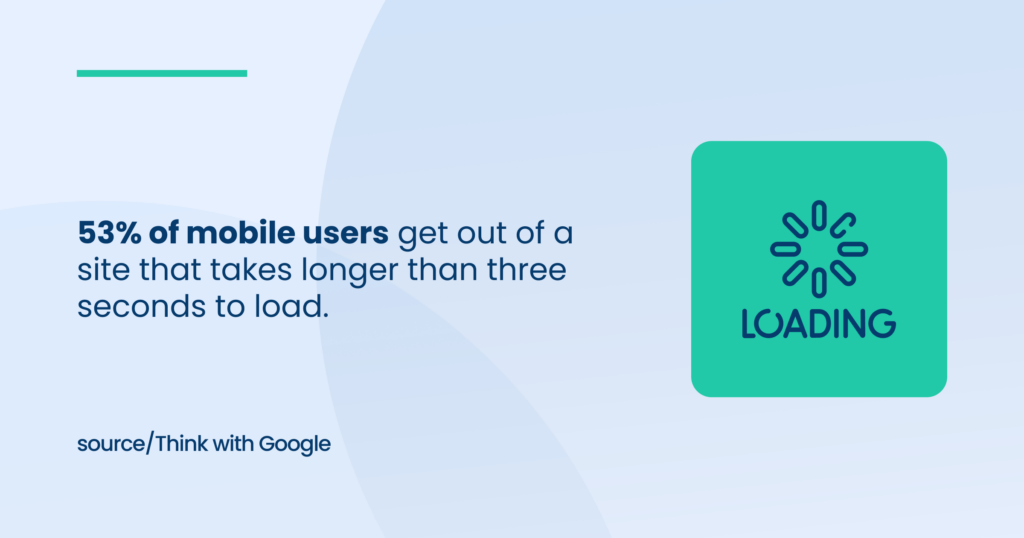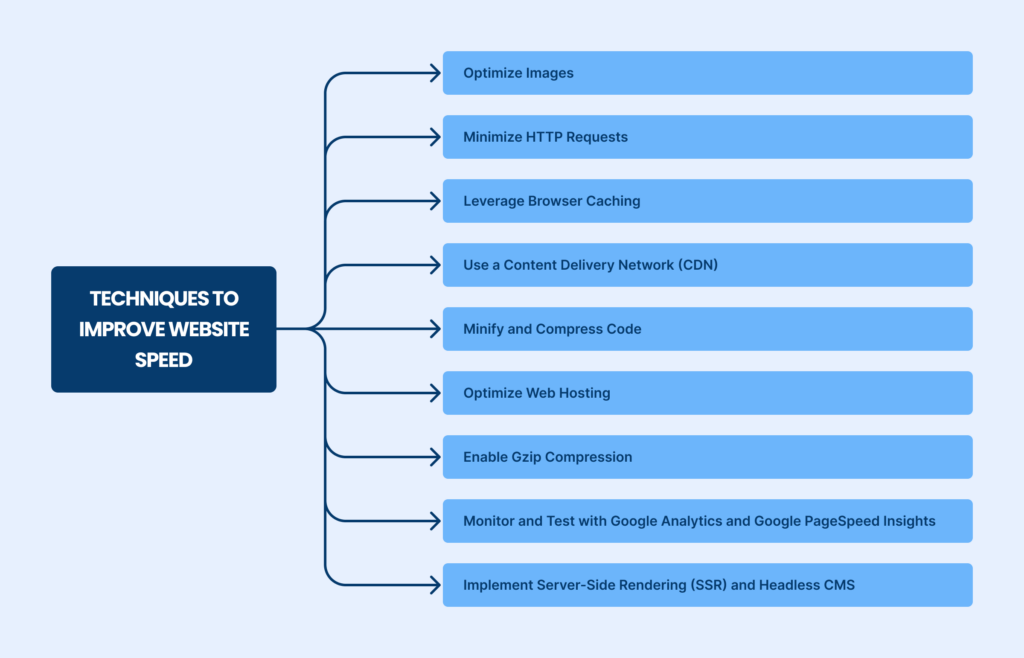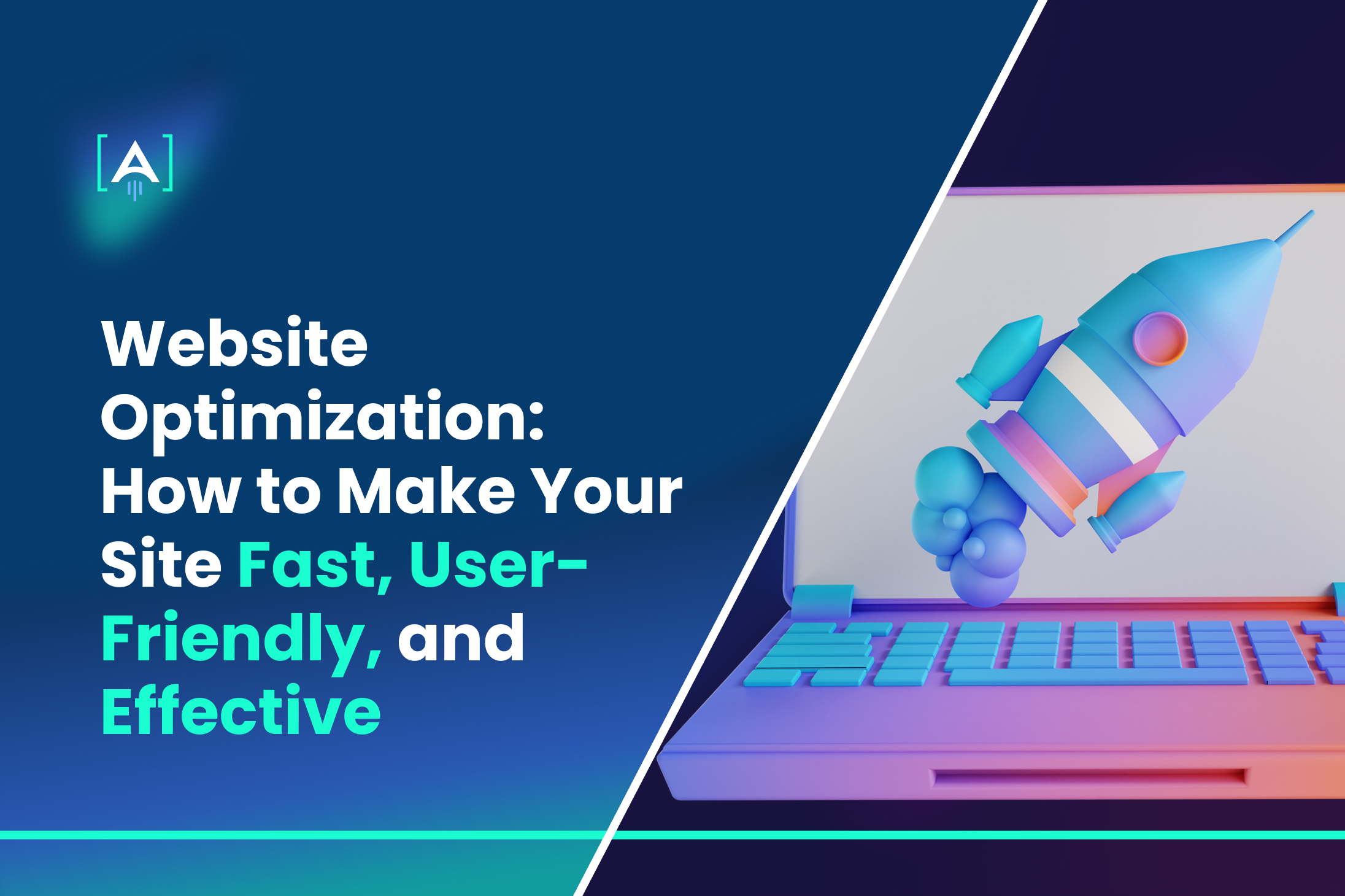Ever wondered why people leave your website before it even finishes loading?
In today’s fast-paced world, website optimization is more important than ever.
Research shows that 53% of mobile users get out of a site that takes longer than three seconds to load. For businesses, this could mean losing out on potential customers and sales.
No matter the size of your business, making sure your website is optimized is key.
Website speed optimization not only improves the experience for your visitors but also helps your site rank higher in search engines like Google.
Faster, more responsive websites are more likely to show up at the top of search results, which means more traffic and more potential customers.
In this article, we’ll cover the basics of website optimization to make your site faster, easier to use, and more effective.
We’ll share tips on improving website speed, using website optimization tools, and boosting your search engine rankings through search engine optimization (SEO).
By the end of this article, you’ll know exactly what steps to take to make your website perform better and provide a better experience for your users.
Working with a website building agency can be a game-changer.
They have the expertise to create websites that are fast, user-friendly, and effective in reaching your business goals.
Don’t let a slow website hold your business back.

What is Website Speed?
Website speed is about how quickly a website loads and displays its content to visitors.
It’s a critical part of the overall website optimization process because it directly impacts user experience and the effectiveness of your online presence.
Slow websites can frustrate users, causing them to leave before even seeing what you offer.
For businesses, this can mean losing potential customers and sales. A one-second delay can cause a 7% drop in conversions, directly hurting your bottom line.
Why is Website Optimization Important?

Website speed optimization is needed because search engines like Google consider it a key ranking factor.
Faster websites are possibly ranking higher in search results, leading to more visibility and traffic.
This is especially important for eCommerce websites, where a fast-loading site can distinguish between a sale and a lost opportunity.
Imagine a user trying to shop on an e-commerce website design that takes too long to load; they will likely abandon the site and look for faster competitor sites.
Several factors can affect your website’s performance, including the size of images, the quantity of HTTP requests, and the efficiency of your web design and development.
Using website optimization tools like Google PageSpeed Insights can help you identify areas that need improvement.
Source: Google Developers
Tools like these analyze your web pages and provide actionable optimization tips to enhance speed and performance.
By focusing on site speed and using a professional website-building approach, businesses can significantly improve their website’s efficiency and user experience.
This not only helps retain current users but also attracts more visitors, leading to higher conversion rates.
Partnering with a custom website development agency that understands the importance of conversion rate optimization can be a beneficial move for businesses looking to improve their website performance.
Whether you’re planning to integrate a content management system or exploring CMS integration options like headless CMS, be sure that your web optimization efforts are aligned with your business goals.
Investing in proper SEO when building a website is equally important, as it helps your site rank higher and reach your target audience better.
Techniques to Improve Website Speed
When you use website optimization in search engine rankings, your user experience will be enhanced, and your site’s performance will improve.
Below are some effective techniques to help you optimize your website’s speed and ensure a smooth, fast-loading experience for your visitors.

1. Optimize Images
Images can normally be the largest files on a website, and if they are not optimized properly, they will really slow down the page speed.
Use the right file format—JPEG for photos, PNG for images with transparency, etc.—and compress images to bring their size down without sacrificing quality.
Implementing lazy loading, where images only load when they enter the viewport, can also help improve site speed.
2. Minimize HTTP Requests
Every element on your web pages—including images, scripts, and stylesheets—requires an HTTP request.
Reducing the number of these requests can help improve your website’s loading time.
Combine CSS and JavaScript files, use CSS sprites for icons, and eliminate unnecessary plugins to minimize the number of requests your site makes.
3. Leverage Browser Caching
Enabling browser caching lets your website store some files on a visitor’s local computer.
This way, when users return to your site, their browser doesn’t have to reload the entire page.
This technique reduces load time and speeds up the overall user experience.
Set cache expiration dates for static resources, such as images and CSS files, to make the most of caching.
4. Use a Content Delivery Network (CDN)
A Content Delivery Network (CDN) duplicates your website’s content on numerous servers that are geographically dispersed around the globe.
This allows access to your site from a server closest to the user’s location, reducing latency and speeding up content delivery.
CDNs are especially beneficial for websites with a global target audience.
5. Minify and Compress Code
Minifying HTML, CSS, and JavaScript files involves removing unnecessary characters, spaces, and comments from the code.
Compression further reduces the file sizes, making your web pages load faster.
Tools like Gzip can compress files for quicker loading times, improving the overall website performance.
6. Optimize Web Hosting
Choosing the right web hosting service is needed for your website speed optimization.
If your site experiences high traffic, consider a dedicated server or a scalable cloud hosting solution that offers more resources and better performance.
Avoid shared hosting if your website requires more bandwidth and faster response times.
7. Enable Gzip Compression
Gzip is a rather popular website optimization tool that compresses your web files.
Source: Javatpoint(GZip example)
Actually, it decreases the size of HTML, CSS, and JavaScript files.
Gzip compression can drop the amount of data that needs to be transferred to users’ browsers, greatly increasing the loading speed and making a website’s performance much better.
8. Monitor and Test with Google Analytics and Google PageSpeed Insights
Regularly monitoring your site’s speed and performance using tools such as Google Analytics or Google PageSpeed Insights is important for understanding how your site performs under various conditions.
These tools provide valuable insights into areas where your website needs improvement and track the impact of your optimization efforts over time.
9. Implement Server-Side Rendering (SSR) and Headless CMS
For complex sites with dynamic content, using server-side rendering (SSR) can speed up the delivery of content to the user.
Pairing SSR with a headless CMS allows you to decouple the backend and frontend, leading to faster, more efficient website building and web design and development.
Creating a User-Friendly Website
Building a user-friendly website will keep visitors engaged and encourage them to take action, whether that means making a purchase, signing up for a newsletter, or contacting your business.
A well-designed, user-friendly site improves the overall user experience and enhances website optimization efforts, making it easier for your site to rank higher in search results.
Here are some key strategies to make your website more user-friendly.
1. Intuitive Navigation
- Use a simple, clear menu structure that helps visitors easily find what they’re looking for.
- Include descriptive labels for menu items to avoid confusion.
- Add a search bar to let users quickly locate specific information or products.
- Use breadcrumb trails to show the user’s path and help them navigate back to previous web pages.
2. Responsive Design for Mobile Devices
- Ensure your website adjusts seamlessly to fit screens of all sizes, from smartphones to tablets to desktops.
- Implement responsive design techniques during web design and development.
- Optimize buttons, images, and text for mobile viewing to enhance readability and usability.
- Test your website optimization on different mobile devices to make sure a consistent user experience.
3. Fast Loading Speed
- Prioritize website speed optimization by using compressed images and minimizing the number of HTTP requests.
- Utilize caching and a Content Delivery Network (CDN) to deliver content more quickly.
- Regularly test your site’s load times using tools like Google PageSpeed Insights to identify and resolve speed issues.
- A fast-loading site not only improves user satisfaction but also boosts SEO when building a website.
4. Clear Call-to-Action (CTA)
- Use prominent, visually appealing CTAs that stand out on the page.
- Make sure CTAs are concise and action-oriented, clearly guiding users on what to do next.
- Position CTAs strategically on key pages such as home, product, and landing pages to drive conversions.
- Regularly test and optimize CTAs as part of your conversion rate optimization strategy.
5. Readable and Engaging Content
- Use easy-to-read fonts and ensure good contrast between text and background for readability.
- Divide large blocks of text into headings, bullet points, listings and images to maintain user interest.
- Incorporate keyword research to include relevant keywords naturally in your content, helping with both SEO efforts and user interest.
- Refresh and update regularly to ensure relevancy and value for your audience.
6. Consistent Branding
- Ensure that your website building aligns with your brand’s identity, including colors, fonts, and logos.
- Use a consistent tone and style across all web pages to reinforce your brand message.
- Link to a branding guide, if applicable, to maintain consistency in design and content.
- Consistent branding helps users recognize and remember your business, enhancing trust and loyalty.
7. Accessibility Features
- Follow accessible standards to make your website available and welcoming to all users, including people with disabilities and different abilities.
- Ensure alt text exists for all images to describe the content to a screen reader.
- Implement keyboard navigation and ensure that interactive elements are accessible.
- Accessibility not only broadens your audience but also improves search engine optimization, as search engines favor accessible sites.
8. Simplified Forms and Checkout Process
- Keep forms short and on point, asking only for essential information to avoid user frustration.
- Use auto-fill and validation features to make form submission easier.
- Optimize the checkout process on ecommerce websites to reduce cart abandonment rates.
- A streamlined process enhances user satisfaction and can lead to higher conversion rates.
9. Interactive Elements and Feedback
- Incorporate interactive elements such as chatbots to assist users with their queries.
- Use feedback forms and surveys to understand user needs and preferences better.
- Engage users with interactive content like quizzes, polls, or videos to keep them on the site longer.
- Regularly gather and act on user feedback and reviews to continually improve the user experience.
Ensuring Website Effectiveness
To ensure your website is effective, it’s essential to focus not only on aesthetics but also on website optimization strategies that improve functionality, speed, and user engagement.
A well-optimized website leads to better website performance, higher conversion rates, and better visibility in search engines.
Here are key steps to make your website more effective:
Define Clear Goals and Objectives
Start by identifying what you want your website to achieve.
This could be increasing sales, generating leads, or providing information.
Clear goals will help guide your optimization efforts.
Use Google Analytics to track key performance indicators (KPIs) such as bounce rate, average session duration, and conversion rates.
Understanding these metrics will give insights into your website visitors and their behavior.
Focus on Conversion Rate Optimization (CRO)
Implement conversion rate optimization techniques to turn visitors into customers.
This includes using effective calls-to-action (CTAs), optimizing landing pages, and conducting A/B testing to find the most effective design and messaging.
Use heatmaps and visitor recordings to understand how users interact with your web pages and find any barriers to conversion.
Leverage SEO Best Practices
Search engine optimization is crucial for driving organic traffic to your site.
Conduct keyword research to identify relevant keywords and incorporate them naturally into your content.
Focus on on-page optimization, such as using descriptive meta tags, alt text for images, and ensuring a logical site structure.
An optimized website is more likely to rank higher in search results.
Utilize Website Optimization Tools
Invest in website optimization tools like Google PageSpeed Insights to monitor and improve your site speed regularly.
Faster loading times also help on the user experience front and will, again, benefit your search engine rankings.
Use tools like Google Search Console to keep track of your site’s performance on the search engines and spot issues.
Implement a Content Delivery Network (CDN)
A content delivery network can notably improve your website’s load time by distributing content across multiple servers.
This increases the speed of the delivery of content to users based on their physical location and enhances overall site performance.
CDNs are particularly useful for websites that attract a global target audience and need to ensure fast, consistent access from different regions.
Optimize for Mobile Devices
As more and more people are using their mobiles to access any website, so making the site mobile-friendly is of key importance.
That is where responsive design needs to be employed for accommodating the different screen sizes and making buttons and text easily interactive on small screens.
Google’s mobile-first indexing makes mobile optimization even more important for SEO and overall web optimization.
Regularly Update Content
Fresh, relevant content keeps your audience connected and interested and helps improve your site’s SEO.
Update blogs, product descriptions, and other content regularly to maintain relevance.
Consistent updates tell search engines that your website is active and valuable, which can improve your rankings in search results.
Monitor and Analyze User Behavior
Constantly use tools like Google Analytics to monitor how users interact with your website.
Analyzing user behavior helps you understand what content works, which areas need improvement, and where visitors drop off.
Use these insights to refine and improve the user experience and site functionality.
Partner with Azarian Growth Agency to Optimize Your Website
Focusing on website optimization techniques, like improving website speed, enhancing user-friendliness, and implementing effective search engine optimization strategies, you can significantly boost your site’s performance and drive more traffic and conversions.
Regular testing and monitoring ensure that your website remains effective, secure, and engaging for your visitors.
Every business, regardless of its size, needs a website that brings in visitors and keeps them engaged and encourages them to take action.
Partnering with a professional website building agency like Azarian Growth Agency can make all the difference.
We specialize in creating optimized websites that are fast, user-friendly, and highly effective at achieving your business goals.
Our team of professionals will guide you through the journey of the website optimization process, from design and development to testing and monitoring.
By working with Azarian Growth Agency, you can access the latest website optimization tools and strategies, ensuring your site remains competitive and aligned with current SEO efforts.
We know how important it is to make the user experience seamless, optimize for mobile, and drive real results with conversion rate optimization techniques.
Don’t let a slow or ineffective website hold your business back.
Optimize your site today and start seeing the benefits of a faster, more efficient online presence. Contact Azarian Growth Agency and let us help you build a website that not only meets but exceeds your business objectives.
Together, we can level up your digital presence and take your business to the next level.

